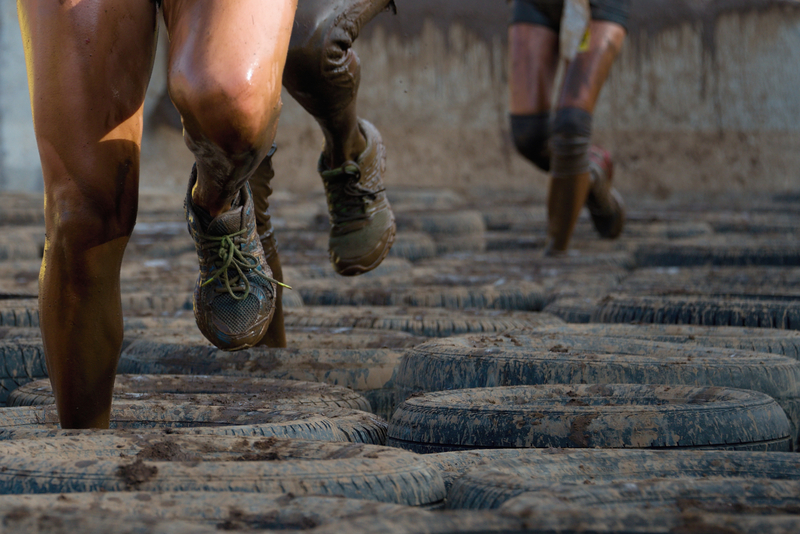Top Mistakes to Avoid When Disposing of PPE Waste
In the wake of recent global health concerns and heightened awareness around workplace safety, the proper disposal of Personal Protective Equipment (PPE) waste has become more vital than ever. Whether you're part of a business, a healthcare facility, or simply using masks and gloves at home, understanding how to responsibly dispose of PPE waste is crucial for the safety of individuals and the environment. In this article, we will delve into the top mistakes to avoid when disposing of PPE waste, offering practical tips to ensure effective waste management practices.

Understanding PPE Waste: A Brief Overview
Personal Protective Equipment (PPE) includes masks, gloves, face shields, gowns, goggles, and other items designed to protect users from infectious agents or hazardous materials. With the increased use of PPE, PPE waste management has become a significant aspect of environmental and public health strategies. It's essential to recognize the types of PPE and how incorrect disposal contributes to pollution, healthcare risks, and legal repercussions.
Common PPE Waste Types
- Masks (N95, surgical, cloth)
- Gloves (latex, nitrile, vinyl)
- Face shields & goggles
- Gowns & aprons
- Shoe covers & headcaps
Why Proper PPE Waste Disposal Matters
Improper PPE waste disposal can be disastrous. Not only does it expose sanitation workers, the community, and wildlife to potential pathogens, but it also contributes to landfill overflow and plastics pollution. Responsible PPE waste disposal ensures that infected materials are contained, reduces health hazards, and complies with governmental regulations.
Main Consequences of Negligent PPE Waste Disposal
- Health risks to healthcare workers and the public
- Environmental pollution, such as microplastics in oceans and rivers
- Potential legal sanctions for violating hazardous waste laws
- Increased litter and operational issues in public spaces
Top Mistakes to Avoid When Disposing of PPE Waste
Below are some of the most frequent mistakes or misconceptions when dealing with PPE waste. Understanding and avoiding these errors can greatly improve your PPE waste management strategy and safeguard both people and the environment.
1. Mixing PPE Waste with Regular Household Trash
One of the biggest mistakes is simply throwing used masks, gloves, and other items into the general waste bin. PPE waste can carry contaminants, especially if used by sick individuals or in high-risk settings. You should always separate PPE waste from regular trash to prevent cross-contamination.
- Tip: Use a dedicated PPE waste bin lined with a plastic bag for easy and safe disposal.
2. Neglecting to Seal PPE Waste Properly
Unsealed or loosely tied PPE waste bags are a hazard. PPE waste can easily spill, exposing cleaning staff and others to infections. Always double-bag heavily contaminated items and ensure all waste bags are firmly tied before disposal.
- Double-check bag integrity to avoid leaks
- Seal bags tightly to minimize exposure risks
3. Disposing PPE in Recycling Bins
Many well-meaning individuals think used masks or gloves are recyclable because they are made of plastic or fabric. This is a critical mistake in PPE waste disposal. PPE is not recyclable through regular recycling streams due to contamination and material composition; it must always be treated as general or clinical waste, depending on local regulations.
- Never: Throw used PPE into blue or green recycling bins
- Look for designated PPE waste disposal stations in your area
4. Flushing PPE Items Down the Toilet
Some people flush disposable masks or gloves, hoping for quick removal. This action clogs plumbing, damages sewage systems, and causes environmental harm. Remember, no PPE waste should ever be flushed down toilets or drains.
- Sewage blockages incur expensive repairs
- Could lead to environmental contamination in waterways
5. Failing to Label or Identify PPE Waste Bags
In healthcare or workplace settings, unlabelled waste can cause confusion and accidental exposure. Correct PPE waste disposal mandates identifying and, if required by law, labeling bags as "Infectious Waste" or with a biohazard symbol.
- Use clear labels for identification
- Help waste handlers apply safe disposal procedures
6. Ignoring Local PPE Waste Disposal Guidelines
Guidelines for PPE waste management vary between cities, states, and countries. Not following regulations might result in fines, service refusals, or environmental damage. Stay up to date with local authority recommendations for PPE waste disposal.
- Consult with local health departments for latest instructions
- Review business or facility PPE waste policy documentation
7. Overfilling PPE Waste Bins
Filling PPE bins to capacity or more increases the risk of spills and contamination. Always empty bins regularly to avoid overflow, and keep lids closed. Overfilled bins are unsafe and difficult for waste handlers to manage.
- Maintain regular PPE waste collection schedules
- Avoid creating hazardous work environments
8. Handling PPE Waste Without Protective Gear
People often forget that waste handlers need protection too. When handling PPE waste, you must wear disposable gloves and, if possible, a mask and gown. Direct contact exposes you to potential pathogens.
- Provide training and protective gear for waste handlers
- Wash hands thoroughly after handling PPE waste
9. Disposing Unused or Bulk PPE Incorrectly
Sometimes, businesses need to dispose of unused or expired PPE stock in bulk. Throwing these items in regular landfill is often not the best or legal option. Check with suppliers or manufacturers for return or take-back programs, and comply with hazardous waste protocols.
- Consider donating unused PPE if possible
- Contact waste management companies for bulk disposal solutions
10. Overlooking Sharps and Specialized PPE Items
Certain PPE, like needles or contaminated instruments, require special waste handling procedures. Placing these with regular PPE waste endangers staff and the public. Always use proper sharps disposal containers and follow clinical waste procedures.
- Never dispose of sharps in general PPE bins
- Follow medical waste regulations closely
Essential Tips for Safe PPE Waste Disposal
Adopting effective PPE waste management practices is straightforward if you implement a few key strategies. Below are some essential tips to help individuals and organizations reduce risks and ensure regulatory compliance:
- Train staff and family members about appropriate PPE disposal methods
- Provide clearly labeled and accessible PPE waste bins in high-use areas
- Schedule regular waste collections to prevent bin overflows
- Keep up with government guidelines, as rules may change during health crises
- Never reuse disposable PPE or handle with bare hands
- Inform local waste authorities if handling large or unusual amounts of PPE waste
Eco-Friendly Alternatives and Innovations
While single-use PPE is often necessary, innovations are emerging in sustainable PPE waste disposal. Some tips:
- Explore PPE made from biodegradable or compostable materials
- Participate in recycling programs specifically designed for PPE (where safe and available)
- Advocate for reusable options when safe, such as washable masks or gowns
- Follow the latest research and updates about sustainable PPE disposals

Frequently Asked Questions about PPE Waste Disposal
Q1: Can I throw used PPE in my regular trash at home?
In most households, small amounts of used PPE (such as masks or gloves) can be placed in your general waste if disposed of safely, sealed in a separate bag, and not coming from someone who is unwell. If you or someone in your home is sick, follow more rigorous containment and disposal steps as recommended by your local health department.
Q2: Is it safe to burn used PPE to dispose of it?
Burning PPE waste at home is strongly discouraged. Most PPE contains plastics that release harmful fumes when combusted. Only incinerators designed for medical waste and operated by professionals should be used for this method.
Q3: What should I do if I see PPE waste littering my community?
If you find discarded masks or gloves in public spaces, notify your local authorities or municipal waste services. Do not pick up medical waste without proper protective equipment.
Conclusion: Prioritizing Responsible PPE Waste Disposal
Ensuring the correct disposal of PPE waste is fundamental to public health, environmental protection, and regulatory compliance. By avoiding common mistakes--such as mingling PPE waste with recyclables, overfilling bins, or neglecting local rules--you play a critical role in minimizing health risks and pollution.
Whether at home, in a business, or in healthcare, always stay informed and proactive about PPE waste management. Provide training, use appropriate signage, consult experts when in doubt, and explore sustainable solutions wherever feasible.
Remember: The global challenge of PPE waste is manageable if everyone takes responsibility. Make the smart choice--dispose of PPE waste responsibly for a safer today and a healthier tomorrow.
- Stay safe
- Protect the environment
- Be part of the solution in PPE waste management!